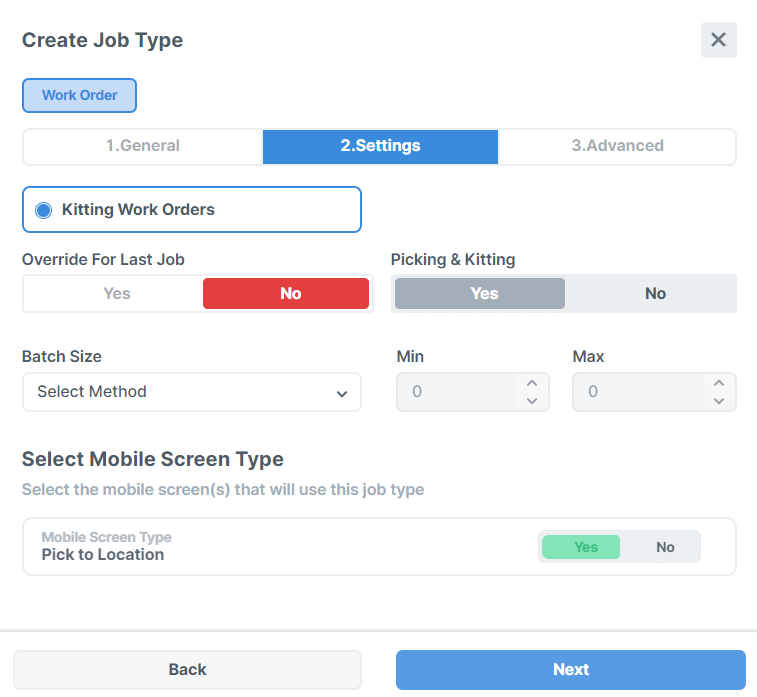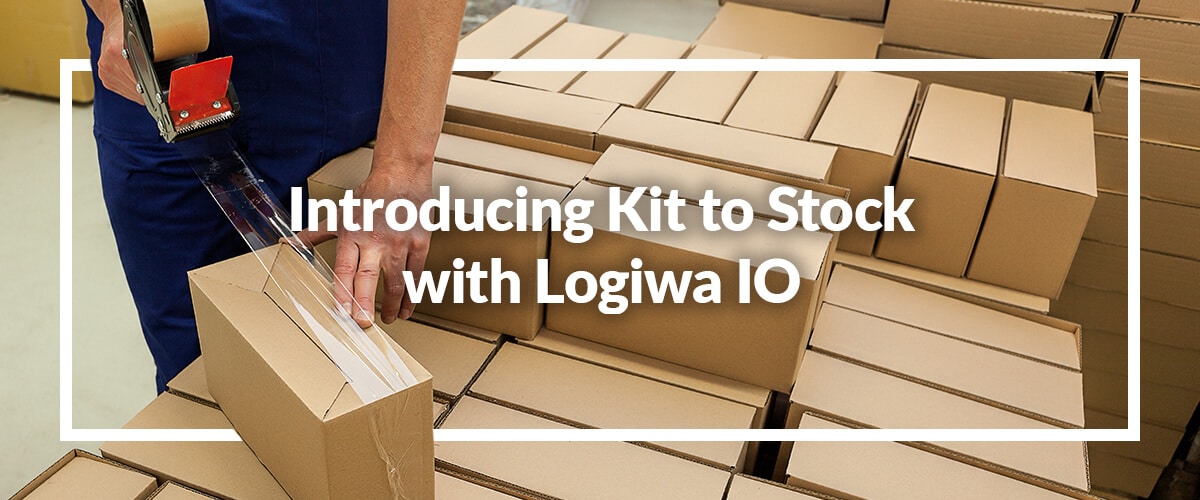Kit to stock is a dominant practice in ecommerce fulfillment, particularly with DTC brands, helping to expedite order processing by simplifying the picking process of special product sets and preparing them in advance. In Logiwa IO, we support two types of fulfillment kitting: kit to order and kit to stock.
- Kit to Order: Kits are created when an order comes in. Product components are stored individually in the warehouse and picked to build the kit SKU after the order is placed.
- Kit to Stock: Individual product components are picked and compiled into a single stored SKU. When an order is placed, warehouse personnel pick the Kit to Stock SKU from inventory and ship it to the customer without further assembly. This saves time when a promotion is being run on a particular product set (think value set, gift set) or special packaging is required. The sets are built all at once, instead of one-by-one.
Here we explore Logiwa IO’s Kit to Stock feature, a robust time-saving solution for DTC brands and 3PLs.
Watch a quick overview of Logiwa IO’s kit operations in the video above.
Contents
Importance of Kit to Stock in DTC Ecommerce Fulfillment
Kit to stock enhances DTC ecommerce fulfillment by addressing many of the common fulfillment and inventory management challenges DTC brands often face including:
- Demands for Fast Delivery
Modern ecommerce customers expect super-fast delivery speeds. About 24% expect delivery within 2 hours, and 41% within 24 hours. For small and medium DTC brands without well-established fulfillment networks, satisfying such high expectations can be impossible.
Thankfully, kit to stock helps companies boost their delivery times. Because kits are pre-built and just need to be picked when ordered versus built one-by-one when an order comes in, businesses can process orders faster and expedite shipping times. - Escalating Need for More Warehouse Space
The more an ecommerce business scales, the more warehouse space is needed to store inventory and process orders. With kit to stock, you use less packaging material and sell more products in bulk, enabling you to maximize warehouse space. - Increasing Inventory Carrying Costs for Slow-Moving Products
Slow-moving items increase inventory carrying costs, including labor, transportation, storage, insurance, and handling. Using kit to stock, businesses can bundle their less popular products with faster-moving items and sell them as a single kit SKU to minimize carrying costs.
Note that kit to stock is different from other warehouse fulfillment methods like build to stock and pick to order. With build to stock, companies manufacture products based on future demand and store them in inventory as they await customer orders. With pick to order, employees receive a list of orders, pick the items from the warehouse, and then pack and ship them.
Introducing Logiwa IO’s Kit to Stock Feature
Logiwa IO is a top-rated cloud-based fulfillment management system perfect for DTC ecommerce brands. Logiwa IO’s Kit to Stock feature enables users to create Kit to Stock SKUs as products and store them in inventory, ready to ship when orders come in.
Create a Kit to Stock SKU in three easy steps:
- First, create a Kit to Stock product
Start by selecting KIT on the product screen to create a Kit to Stock SKU as a product. Then define the SKU, select Component SKUs, specify packing requirements, enable lot/expiry tracking, and add the custom fields you want.
- Next, define the Work Order Types
Start by clicking Work Order Type under the Data Setup screen. Then name the Work Order, select Work Order Type (Standard or Backflush), select Kit SKU you want to build, specify the amount needed, input date/instructions, and define custom fields.
- Finally, set Job Types for Work Orders
Click the Create New Job Type under the Job Types page. Then select Work Order Operation Type, name job type, choose warehouse, select an allocation algorithm, and specify batch size.
Unique Aspects of Logiwa IO’s Kit to Stock Feature
Factors that make this feature stand out include:
- Enables users to track the start and end times for kit building
- Plans to integrate kit-building time with billing modules soon
- Allows users to track and review inventory changes before creating kits
- Supports kit disassembling
Benefits of Implementing Kit to Stock In Fulfillment Management Networks
Here’s how the Kit to Stock process enhances DTC fulfillment.
Improved Efficiency in Inventory Usage and Reduced Wastage
The ability to bundle different inventory into a single kit SKU allows DTC brands to move dead stock through innovative marketing techniques. For instance, you can design a holiday gift hamper kit that combines low-demand items with hot-selling products.
Enhanced Speed of Order Processing and Delivery Times
Kit to stock reduces picking and packing time, as items are prepacked in kits. It enables fulfillment teams to work rapidly and process orders instantly. The faster that orders are processed from the warehouse, the sooner they reach end customers.
Boosts Ability to Scale Operations More Effectively to Meet Demand Fluctuations
It’s easier for DTC brands to scale operations smoothly using the Kit to Stock process. First, kit to stock saves inventory carrying costs. The cost savings gained can be channeled toward expanding inventory. Additionally, bundling products enables DTC brands to keep up with demand fluctuations by swapping components based on changing market demand.
Kit to Stock: Setting New Standards in DTC Ecommerce
Kit to stock elevates DTC ecommerce to a higher level by enhancing order fulfillment efficiency and contributing to reduced shipping times. Embracing the Kit to Stock process gives DTC brands a competitive edge in today’s ecommerce space where customers desire instant delivery and accurate order processing.
Fortunately, you can count on Logiwa IO to optimize inventory kitting whether you prefer Kit to Order or Kit to Stock. Logiwa IO is the home for ambitious ecommerce brands, 3PLs, and high-volume fulfillment networks focused on expanding their fulfillment operations and fulfilling brilliantly.
Schedule a demo of Logiwa IO today and see firsthand how our Kit to Stock feature can transform your ecommerce operations.
FAQs about kitting
What is kitting?
Kitting is an inventory management method that involves packing different but complementary items together to be sold as a single unit.
What is the difference between kitting and packing?
Kitting involves bundling related items into a single package. Packing is bundling any items into a package.
What is the difference between kitting and assembly?
Kitting only involves grouping different components already manufactured. Assembly may include the production of new parts.
What is the work order kitting process?
This is the process followed when creating Kit to Stock products.
Does Logiwa offer kitting?
Yes. Logiwa IO supports kit to order and kit to stock.
Learn How Logiwa IO is Shaping the Future of Fulfillment
Warehouse Management
Modern digital WMS powers a modern fulfillment experience





